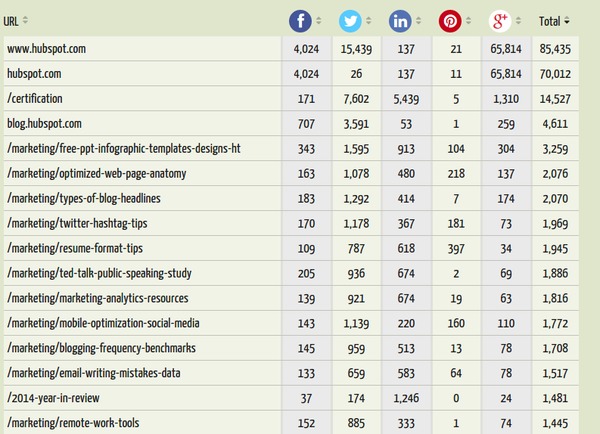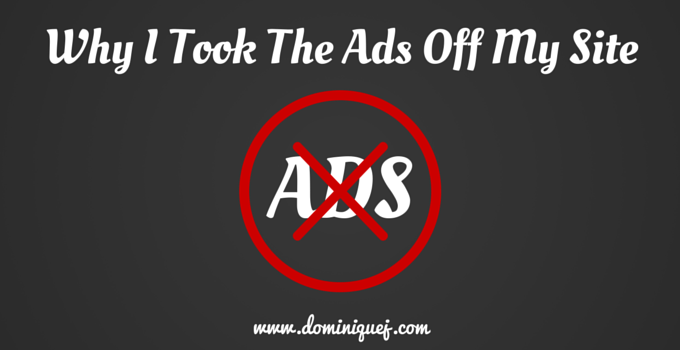Yea, we’re going there.
One of the most important parts about creating content is making it appealing. Being appealing from both a visual aspect, and a contextual one, is what makes people gravitate towards one piece of content more than another. Creating that appeal, takes practice. And you probably won’t be able to do it every time. But knowing what makes content “sexy”, and how to spruce up the blog posts you create, will help increase the amount of people who read it, the amount it gets shared on social media, and build your audience.
What Makes A Blog Post Sexy?
The word “sexy” is subjective right? What’s attractive to one person might be repulsive to the next. No matter how hard you try, your content won’t appeal to everyone. That’s why it’s important to narrow down your target audience, or create an avatar of who you’re speaking to. Then, find out what attracts that avatar to certain content. What type of blog posts do they want to read? Are they visual, or do they prefer facts, statistics, and hard numbers? This is the type of info you have to get in order to make the right type of blog posts.
How do you go about finding out what type of content your target audience is attracted to? It’s actually pretty simple. Look for the blog posts from other people in your industry that your avatar would read, and that has been really successful. Since you won’t have data like conversions, you’ll have to turn to other metrics like engagement in order to judge how popular blog posts on other sites is.
Some key things to look for are:
- Number of social shares
- Comments?
- What are people saying about the post on social media?
When a blog post really resonates with people, they’re going to share it on social media, and get engaged in the conversation either through commenting on the site or Twitter, Facebook, Google+ etc. When a person takes some sort of action beyond just reading a post, then something within the content really stood out and appealed to them.
It’s just like the dating world. If you see someone who you’re attracted to, you might build up the courage and walk up to them and start a conversation, or chat with them on social media. You were interested in what you saw, and you dug deeper to find out more info.
On the flipside, if you meet someone who you’re not attracted to, you just go on about your day and probably never even think twice about that person. The same exact thing happens with blog posts. Not every blog post will spark a connection, but when one does, you’ll have a starting point to build a relationship between your avatar and your brand.
In order to start finding the blog posts that have been successful in your industry, here are a couple of quick and easy methods you can use:
Quicksprout: This is one I’ve talked about before, because it’s very awesome. Plugin the URL of one of the sites your avatar would go to. Then click on the Social Media Analysis tab. You’ll see a list of all of the content on that site, organized by the number of social shares. Take a look at the posts that have the most shares, and thoroughly examine them (I’ll show you what to look for in the next step).
BuzzSumo: You can either plugin a website like you did with Quicksprout, or you also have the option of just plugging in a keyword. Then Buzzsumo will give you the best performing content based on your search. With the free version, you only get a handful of results. But it should be enough to give you a general idea of what’s working well in your industry.
Once you’ve identified some of the best performing content in your industry (try to get around 5-10 posts to look at and save the URL’s to come back to later), the next step will be to analyze the content to see what’s making it so popular in the first place. Sometimes you’ll find some similarities between the content that’s the most popular.
Analyzing Popular Content To Find What Makes It Sexy
Let’s look at an example of how to analyze popular content, in order to help us create sexy blog posts of our own. After running a Quicksprout analysis for the top blog in my industry, Hubspot (in the screenshot above), I noted the top 5 blog posts in terms of overall social shares.
http://blog.hubspot.com/marketing/optimized-web-page-anatomy
http://blog.hubspot.com/marketing/free-ppt-infographic-templates-designs-ht
http://blog.hubspot.com/marketing/types-of-blog-headlines
http://blog.hubspot.com/marketing/twitter-hashtag-tips
http://blog.hubspot.com/marketing/resume-format-tips <—– This one is a bit off-topic, but we’ll work with it.
Immediately, the first thing that pops out to me is that 4/5 of these posts have infographics. The second post is actually a guide about how to create infographics.
The second thing I notice is that the posts are all “how to” types of content. They aren’t theoretical or opinion posts. They are showing the readers how to improve something:
- Post #1: How to make an optimized web page
- Post #2: How to create an infographic
- Post #3: How to write better headlines
- Post #4: How to use Twitter hashtags
- Post #5: How to format your resume
And that’s just the top 5 posts. If you look at the other posts that have been shared heavily on Hubspot, most of them are also “how-to” types of content.
Another similarity I noticed is that the posts aren’t extremely long, which is something I’ve talked about before in a Mythbuster post. A huge misconception is that blog posts have to be 3,000+ words long in order to be “good”. That’s not always the case, and it’s another reason why analyzing popular content within your industry is crucial. Even the posts on Hubspot without infographics that are popular are under 2,000 words.
Let’s take a look at the structure of some of the posts. You’ll notice that they use headlines, and lists a lot. I also notice that the content seems to be sequenced (i.e. step 1, step 2, etc.), which makes sense due to the “how to” nature of their popular content.
Lastly, pay attention to the voice, tone, and context of the blog posts. You’ll notice that the posts are written in second person for the most part (you, your), similar to how I write on this site. The content is written as though they are speaking directly to you, which is a very effective writing technique, particularly for blogs.
Gathering up all of the info I went over, you’re probably starting to get a really good picture of what Hubspot’s audience finds sexy. If you were going to create a blog targeting a similar audience as Hubspot’s, in order to make it more appealing to them, you’d probably want to include these elements:
- Use infographics: The audience is visual, and prefers their information is the form of graphics as opposed to just text.
- Teach them: The audience enjoys actionable posts that help them improve on their skills, or show them how to do something.
- Keep it brief: I wouldn’t invest heavily into 4,000 word mega-posts. This audience appreciates getting the facts they need, and the most important information. Shorter articles don’t turn them off.
- Structure the posts: Long paragraphs with no breaks in between won’t work with this audience. The post should be broken up with headlines, and go in a logical sequence. Use lists whenever possible.
- Use a 2nd person POV: Speak directly to the reader. Avoid speaking in third person or with generalizations (“they”, “one might”).
This info is specifically for the data I gathered from Hubspot. Your industry may be different. You might find that your audience prefers videos, or longer ultimate guide type of posts. It’s all about looking up what works best for your audience, and what’s sexy to them.
General Tips On Sexy Blog Posts
I mentioned that “sexy” is subjective, which it definitely is. That being said, there are certain elements that are pretty common among popular posts. They’ll improve the visual look of your blog posts, and also make your content more enjoyable and intriguing.
Avoid large text blocks
You may have seen this piece of advice before, but it can’t be said enough. When it comes to writing for the web, long paragraphs don’t cut it. They’re difficult to follow, and can look kind of intimidating to readers at first glance. Which one of these would you be more inclined to read?
[one_half_last] [/one_half_last]
[/one_half_last]
Grab them with your headline
Writing great headlines is an art. Not every headline will be a home run. But you should take some time to try to craft a headline that really draws people in. I touched on the importance of headlines in this post on how to make Slideshare presentations, and a lot of the same concepts apply for blog posts. Copyblogger has some great resources and templates for making attention grabbing headlines that’ll give you a great starting point.
Get visual
You don’t have to make custom graphics for every blog post you write. And like I said, there are some people who are completely indifferent to graphics, and don’t find them necessary in order for content to be sexy to them. But even the most dry and boring audience will appreciate some type of visual element within the content. Whether it be in the form of a chart, graph, infographic, etc. We are visual creatures, and images stimulate us.
Make your audience think
Believe it or not, blog posts don’t have to be a 100% one way form of communication. Some of the best content out there has a conversational tone and flow to it. It’s something I incorporate into my content. You can make your blog posts into more of a conversation by posing questions throughout the article. Questions force the reader to think. Throughout this blog post, I’ve been asking you questions that make you think. When you do this, your blog posts go from you doing all of the talking to more of an exchange of ideas.
Focus on them
A common mistake that seems to happen with a lot of small businesses in particular, is not focusing content on your audience. Your blog shouldn’t be about you, it should be about the reader. The truth is that readers don’t really care about you. I don’t mean that in a harsh way. Your personality and character play a role in the success of your content marketing, but most people are coming to your blog for information and to get something out of it for themselves.
In the beginning of this article when you looked at the most popular content in your industry, you probably didn’t see too many self-serving or “company news” blog posts getting shared much, did you? That’s because people don’t care about that stuff since it doesn’t affect them. Make sure that your content places your target reader as the main focus, and serves their needs.
Put yourself in their shoes for a second, do you think they’re more attracted to someone that just talks about themselves, or someone that’s interesting in learning more about them and addresses their needs?
[Tweet “Is your content focused on you, or your audience?”]
Be Sexy, But True To Yourself
Something you should be cautious of, is losing yourself and your voice by trying to appeal too much to your audience. Your personality and uniqueness are a part of the equation too. Think of it this way. When you’re going out on a date, sure you might dress well, go to the other person’s favorite restaurant, and try to appeal to what attracts them, but you’re still being yourself (or at least I hope you are!).
All of the different elements I went over to improve the appeal of your blog posts are the building blocks of what will pull people in. But in order to make them stay, you have to add in your own personal flare. The writing has to be good. They have to gravitate to your brand and overall message. When you look at some of the top bloggers out there, you’ll notice that they inject their humor, experience and personality into their content. That’s what really sets them apart and allows them to build their company through content marketing.
Combine all of the tips I gave you along with your own voice and personal touch.
Putting It All Together!
The overall theme here is making content that appeals to your ideal readers, or your avatar. If they’re not attracted to what you’re putting out there, they’ll look right past you without a second thought. To give a quick recap of what I went over:
- Identify your target audience, and create an avatar of them
- Find the most popular blogs that your avatar reads, and see which content performs best
- Analyze the best performing content and see what qualities/elements are common in them. This is what’s sexy to your avatar
- Create content based on those elements
- Keep my best practices in mind when creating blog posts (formatting, headlines, visuals, etc.)
- Add your personality and unique voice into your content
Now it’s time to take action. Use this post as a guide to help you start cranking out that sexy content that attracts your audience!
Need help making making your content appealing and attractive to your target audience? Contact me for a consultation!







I love how you compare posts with the dating world. A very unique way of looking at it and yes, not everyone will find my content “sexy” per se and knowing who I’m marketing to definitely helps. Great share with your unique twist.
Thanks Megan! I like drawing comparisons between marketing and day-to-day experiences. I think it makes it easier to understand and grasp.